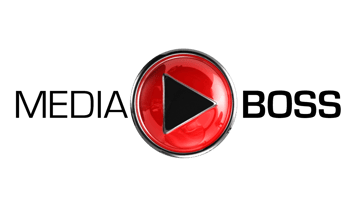Every Top 5 of every productivity / hack blog post ever written offers the advice: Do the Hard Thing First.
Ok. So, which hard thing am I referring to, you ask? The big one. The hardest thing. GET ORGANIZED.
This ubiquitous gem is inescapable. And yet, we always seem to try and avoid this tried and true approach of doing the hard thing first.
Why? Because our desire for results makes us tend toward instant gratification. It takes hours, days or weeks to get organized and work toward something.
Because it’s difficult to follow a new regimen; because it’s hard to find the time in our over scheduled lives to work out; and because getting back on track takes time.
You need to approach getting fit in an organized fashion. You need to make time to work out in your schedule. You need to plan your meals ahead of time. You have to make time to cook, etc.
We find our clients struggle with a similar issue when it comes to their marketing plans. Instead of focusing on organizing a plan for the future, they'd rather look back and point out that what didn’t work. And then they waste spend more time wondering why their disorganized approach didn't work.
We get it.Trust us. It’s much easier to look backward at what already happened than it is to look to the future and wonder 'what will happen if...'
The past is tangible; the future is not.
But here’s the deal: When you spend your time looking backwards you are bound to step off a cliff. A giant, “Oh crap, we’re gonna fail” cliff.
Those who are serious about getting healthy and fit will often hire a personal trainer to help them organize a plan and hold them accountable. A personal trainer will help you to visualize a plan. They'll build a tailored program for you to follow. They'll give you tips on finding time to eat well and work out. They will hold you accountable.
A personal trainer may also get your out of your comfort zone. They'll have you try exercises that are uncomfortable for you in the beginning, but yield better results in the long term.
A marketing personal trainer [like us!] can do the same for you.
We can help you organize a plan. We build tailored programs; we break your efforts down in a manageable chunks; we hold you accountable. And we'll probably suggest you try things that you haven't thought of trying before that seem scary at first.
But back to that first Hard Thing on the list: Organization.
Here's our 9-Step plan to get you started on the road to a better organized marketing plan:
1) Pick a Target
This is different than setting a goal. This is the first step – and one of the most frequently skipped steps – to a better organized plan.
Let’s get back to the fitness metaphor again for a second. When you decide you want to improve your physique you have something in mind, don’t you?
You want to be able to keep up with your kids. Or you want to lose a few inches. You tell your personal trainer your ideal endgame and he or she sets you up with a program that will target that goal. Then, when you start to work toward your goal, you'll start to see benefits in other areas. Not only will your stamina improve, but you’ll notice your skin looks better. You’ll lose a few inches and find you’re less tired at the end of the day.
The same thing will happen when you choose a marketing target. Like your body, marketing involves many interconnected parts. When you boost one area, the rest can see the benefit, too.
Example:
Let’s say your target is your social media engagement. Well, what do you need to improve your social media engagement? Among other things, you'll need a strong content marketing strategy and a clear idea about your branding.
But before you get too far down that rabbit hole, second:
What have you tried to improve your social media engagement in the past?
Document the efforts and share them with your marketing coach. You may say, 'Of course our past efforts are already documented! But go through the documentation and make a second copy to share.
We find the act of revisiting past efforts in detail is invaluable. Things that were not obvious at the time become obvious after-the-fact. It's important to understand what didn't work in order to find what could work. Now, you'll want to:
3) Commit to a Program Launch
Sound obvious enough for an eye roll? You might be surprised how many of our clients struggle with this bit.
In fact, we struggle with it ourselves. Everyone has the best intentions. But too often the planning begins before a start date is commited to.
That's dangerous. Because mid-way through a great plan, you and your team can start to feel overwhelmed. And once we start feeling overwhelmed, we start making excuses.
- There's too much to do;
- This is too complicated to plan for right now;
- We'll need a bigger budget;
- We should wait until Q4; Q1; Q2; Q3, etc.
If we begin with a start date, then we can set a realistic plan in motion for what can get accomplished.
If your start date is next week then there’s a short plan we can put into place. If it’s next quarter or next year, then we’ve got some clean air and can get more creative.
Now that you have a start date:
Your endgame can be a date or it can be an accomplishment. Getting back to your fitness goals, your end game may be to play tag with your kids for 20 minutes. Or it could be a date, like the beginning of summer.
No quitting half way through!
How long will you target this trouble area before you expect to reach your goal?
- 60 days?
- 6 months?
- Forever?
There isn’t a wrong answer. Just choose one. Because that will help you:
You know your target. You know your start date. Now, by how much did you want to improve? Be realistic. Please. Nothing is more demotivating than the sense of impending failure (though, we recommend not thinking of missing your goal as a failure. More on that in a bit).
If you wanted to increase your social media engagement by 80% then you need to set guideposts toward this goal. You want to see an increase of 5% per month over the next 16 months.
6) Do a Content Audit
What repurposable content do you have in your arsenal? Most of clients excellent material under utilized or has become newsworthy again, these can include:
- Blogs
- Videos
- Slideshares
- Webinars
Take a look at your published content and see if there’s a repackage opportunity there. Is there are common thread between some pieces of content? Then, maybe there’s a campaign in there that you hadn’t noticed before.
Now you can create your execution plan. You know your target. You know your lead time to the start date. You know what realistic goal you are working towards. You know what content you already have in your back pocket.
It’s time to start planning what assets you need to produce.
Make a reasonable list of product you'd like to see complete for your start date. Vary the content. It doesn't all have to be big-ticket items like data sheets and videos.
What will your social media content look like? Will you need graphics to help promote certain pieces of premium content?
Make your wish list and assign roles to your team. Re-evaluate that wish list and tweak it until it's a reasonable, doable list for you and your team to tackle.
Now it's time to:
8) Implement Your Plan
It's go-time! Kick off your plan and stick to it! Make it into an event so everyone in your company is aware. When you operate in the shadows of an organization, don’t be surprised if people don’t participate. One of our clients launched a marketing plan by decorating the office with balloons.
9) Analyze Effectively and Tweak
Now that you have a plan and are executing said plan, plan time to analyze your efforts at regular intervals.
It’s important to strike a balance between ignorant bliss and analysis paralysis.
Don’t wait until the end of a campaign to check on the overall success. Personal trainers suggest regular weigh-ins and measurements. This is helps them understand whether the fitness plan they laid out for you is working the way it should. If the results aren’t what they expect, then they can tweak exercises and make nutrition suggestions.
Don’t check your campaign results too often. If you weigh or measure yourself everyday you’ll miss the pay off of seeing results. You may feel defeated if the numbers aren’t where you want them to be yet. You may be tempted to start making arbitrary changes to your plan to try and see a bigger improvement. If you work out for twice the amount of time one day, then you may not be able to work out the next day. You get the idea.
If you chose a target and your plan isn't moving toward your goal, tweak your plan. You didn’t etch your plan into stone. You laid out the best course of action with the information you had at the time. Now you have new information.
If you ignore the new information in favor the old, then there isn’t any point to your plan in the first place, is there?
Remain flexible. Be realistic. Move forward in an organized, thoughtful fashion. And you’ll see positive results. Promise.



Comments